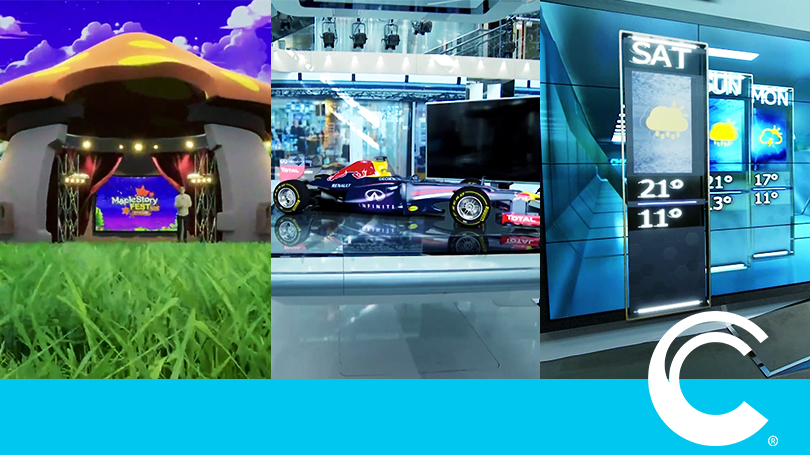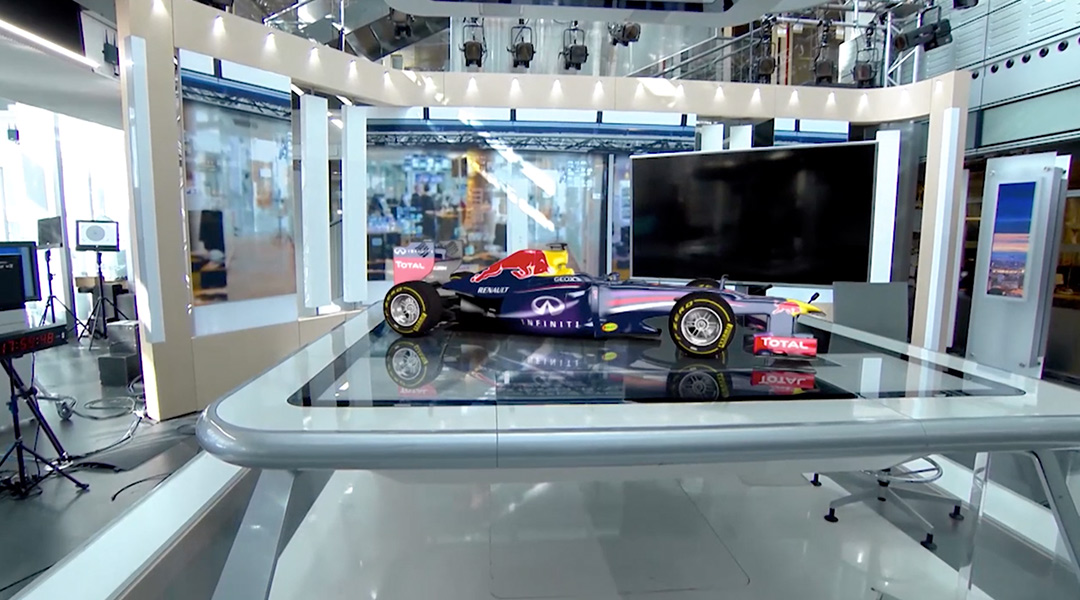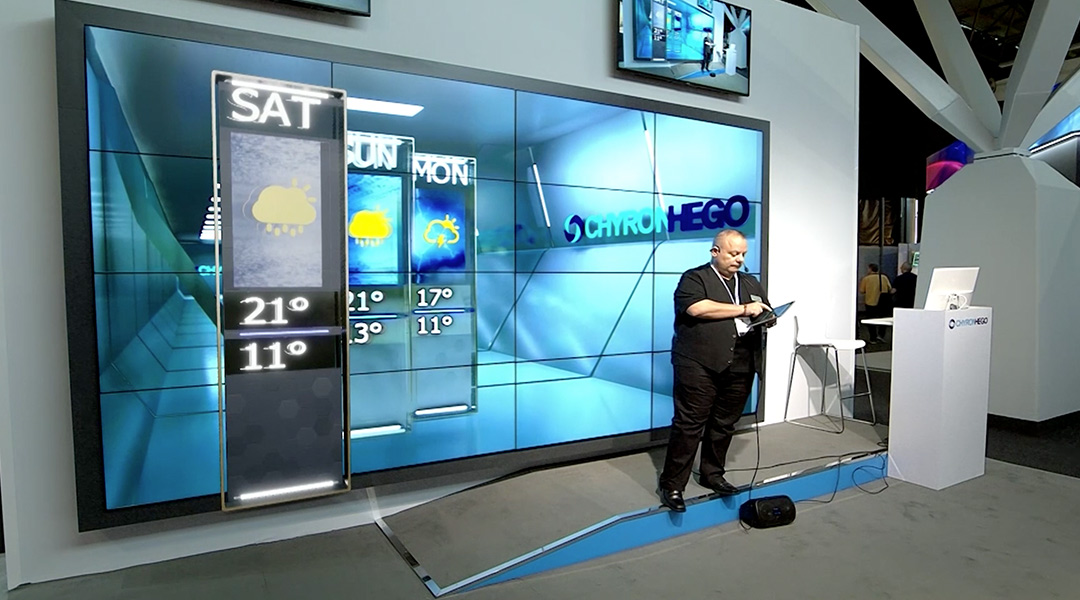
Three Ways to Leverage the Unreal Engine in Your Studio
The Unreal Engine is at the center of some of the most visually-stunning media out there in the world today – be they films, television, and even video games (where Unreal got its start). The secret sauce behind Unreal’s success is pretty straightforward: this is the world’s most open and advanced 3D creation tool that brings photorealistic rendering, dynamic physics, and lifelike animation together – all in real-time.
Equally important is that broadcast technology manufacturers such as Chyron are building the necessary suites and tools around Unreal that truly bring it into the live production fold: system connectivity, camera tracking management, data integration, production control, newsroom integration, and so on. Chyron’s Unreal virtual set and augmented reality suite – PRIME VSAR – offers all of the above and more!
Now, you might be wondering how your organization can leverage Unreal graphics in your live productions. Unreal virtual production can happen through three different methods, but you can also combine these into hybrid environments – we’ll examine them below in more detail:

1. End-to-End Virtual Sets
For total creative freedom in the scenes you create, going all-in on virtual with a green screen set is the ideal choice. You can host your show in a virtual studio with an immense sense of depth and visual flair, or you can transport your live talent into fantastical scene spaces that you could never dream of physically filming. Cover space exploration from the surface of the moon, cover severe weather events from a simulation of the epicentre, or host an esports event from a replica scene from a video game – the only limit is your imagination and creative talent.
To keep the real-life footage feel in a virtual environment, systems like PRIME VSAR provide camera tracking processors. These processors ingest tracking data from your studio cameras and replicate the movement within your virtual scene.
Stunning Studios from a Sliver of Green Screen
For budget-conscious studios and stations, trackless virtual productions offer an incredible opportunity to deliver all-new, eye-catching content with minimal expenditure. In this scenario, one stationary camera captures live talent on a green screen set for keying into the scene – with all camera movement happening within the virtual space. You can run wild with scene layouts and shot transitions with virtual cameras, and systems like PRIME VSAR offer intuitive trackless camera control interfaces. However, the real value here is that you can pull this off with a fraction of the real estate associated with a new studio. You can execute a trackless virtual production with about a closet’s worth of green screen space.

2. In-Studio Augmented Reality
If you’re happy with your current physical studio, augmented reality is the perfect option for introducing exciting storytelling elements to your program -without a costly overhaul of your set. You can enrich sports, elections, news, or weather programs with hyper-realistic models and data-driven graphics that seamlessly weave into the 3D space of your real-life studio. Again, while the Unreal Engine is driving the photorealistic graphics that blend so well into a real-life space, systems like PRIME VSAR provide the tools and integration broadcasters need to format these AR elements for live news storytelling. From a design standpoint, PRIME VSAR includes AR production tools that enable you to draw shadows and reflections of graphics on the floor of your set and position graphics behind physical objects. And of course, managing the camera tracking data to keep assets in-sync with camera moves.
Leapfrog the Traditional News Graphics Paradigm
Another vital value-add for news storytelling is data integration. PRIME VSAR makes it easy to connect to external data sources, plug that data into your graphics, and make live updates to them from the newsroom. With Unreal augmented reality, you’re able to rethink the traditional charts, tickers, and lower-thirds that viewers have been watching for decades. Whether it’s the nightly news, weather forecasts, or even sports betting coverage – creativity in your presentation of data is the true differentiator between you and your competitors. Simple stat graphics become more compelling when they seem like a real-life part of the studio, plus you can rethink how you present data – such as a moving 3D model of weather conditions for each day of your 7-day forecast.

3. Virtual Set Extensions
A virtual set extension is where we take a video wall display and give it a greater sense of depth and motion with a tracked Unreal virtual scene. Virtual set extensions are a more recent innovation in the virtual production space that is gaining popularity alongside the falling cost and increasing ease of use of LED video walls for studio facilities. Again, the camera tracking processor plays a vital role in this scenario, enabling a parallax effect, where the virtual scene in the video wall tracks in lockstep with your camera movement.
Beyond enhanced content for your studio’s video wall, virtual set extensions can provide massive quality of life alongside a green-screen physical set. On-air talent has to do a lot of guesswork and intense rehearsal to nail the presentation of virtual elements they can’t physically see. With a virtual set extension, talent can more naturally interact with the media on-screen.
Hybrid Virtual Production
The final point to remember is that you’re not limited to only one of these options for Unreal virtual production. Think about the unique requirements of your content and the information you deliver to your audience, and you can select the combination of green-screen virtual sets, augmented reality, and video walls that will suit those needs best. Host the majority of your show on a physical set with AR elements, and walk over into a green-screened scene for specialized segments. Create a green-screen studio that features a real-life video wall for your on-air talent to use as a point of reference. Or combine all three techniques for the ultimate virtual studio experience – the choice is yours.
Harness the Creative Power of the Unreal Engine
With its photorealistic graphics and real-time rendering capability, the Unreal Engine represents a paradigm shift in captivating viewers and presenting data. For live content creators, systems like PRIME VSAR merge the cutting-edge graphics of this gaming engine with the built-for-broadcast design, editorial, and playout tools to meet the demands and rigors of live production. With flexible options for deployment, Unreal virtual production is a viable option for small studios to major television networks.
Read about PRIME VSAR’s recent 1.7 release, which brings support for Unreal Engine 4.26, rapid-to-create and easy-to-manage graphic templates, as well as significant upgrades to the PRIME VSAR engine.


